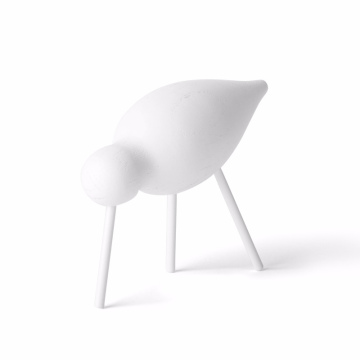Exploring Zurich's Old Town: The City's Fascinating History
Introduction to Zurich's Old Town
Zurich's Old Town, known in German as Altstadt, serves as the historical and cultural nucleus of the city, embodying centuries of rich heritage and vibrant urban life. Nestled on the banks of the Limmat River, it boasts a geographical layout characterized by narrow, cobblestone streets, charming squares, and a blend of medieval and modern architecture. This area comprises two main parts: the city’s eastern side, which features the impressive Fraumünster church with its iconic stained-glass windows, and the western side, home to the Grossmünster, a landmark with twin towers that have become synonymous with Zurich itself.
The significance of Altstadt extends beyond its picturesque vistas; it is a testament to Zurich's evolution over the centuries. Originally a Roman settlement, the Old Town has served as a commercial and cultural hub since the Middle Ages. Walk through its winding alleys, and one can almost feel the pulse of history—from the affluent patrician houses to artisanal shops and cafés that offer a glimpse into traditional Swiss life. The blend of historical landmarks and contemporary amenities makes Old Town a compelling area for visitors.
As you explore Zurich's Old Town, you will encounter numerous sights that are steeped in Swiss history. The area has witnessed critical events that shaped not only Zurich but also Switzerland as a whole. Notably, it has been a center for religious, economic, and artistic developments throughout the centuries. The Altstadt is not merely a location; it represents the essence of Zurich, drawing both locals and tourists alike. Those visiting Zurich will find that Old Town is an indispensable part of their journey, richly layered with stories and experiences that reflect the city’s past and present.
Historical Landmarks and Their Stories
Zurich’s Old Town, or "Altstadt," boasts a rich tapestry of historical landmarks that tell captivating tales of the city’s past. Among the most prominent is the Grossmünster, an iconic Protestant church recognized for its twin towers. Originally built in the 12th century, this masterpiece of Romanesque architecture symbolizes Zurich's Reformation history and is intimately linked to reformer Zwingli, who played a crucial role in shaping the Protestant movement in Switzerland. Visitors can ascend the north tower for a stunning panoramic view of the city and Lake Zurich, further deepening their connection to the landmark's storied past.
Another architectural gem in the Old Town is the Fraumünster. Originating in the 9th century, this church is distinguished by its breathtaking stained glass windows created by Marc Chagall, which illuminate the interior with vibrant colors. The Fraumünster also has a fascinating history; it was established by a powerful abbess, and women held significant influence during its early years. The church stands not only as a place of worship but also as a testament to female leadership in medieval Zurich.
Equally significant is the Rathaus (Town Hall), an exquisite example of late Gothic architecture, completed in 1698. Situated on the banks of the Limmat River, the Rathaus has been the site of governance for centuries, hosting numerous important meetings and events that shaped the development of the city. Its ornate façade and richly decorated interiors invite visitors to ponder the political history of Zurich. Historical anecdotes, such as its survival during the Great Zurich Fire of 1290, add to the charm of this essential landmark.
Each of these landmarks, along with numerous others scattered throughout Zurich's Old Town, contributes to the city’s identity, encapsulating tales of triumph, faith, and community that resonate to this day. The blend of architectural styles and rich narratives provides an invitation for residents and visitors alike to explore and appreciate Zurich's historical depth.
Cultural Heritage and Modern Life
Zurich's Old Town, or Altstadt, serves as a living testament to the city’s captivating cultural heritage while simultaneously embracing the vibrancy of modern urban life. Walking through the cobbled streets, one can observe a harmonious interplay between historical architecture and contemporary establishments. The presence of medieval buildings, charming alleyways, and iconic landmarks, such as the Grossmünster and Fraumünster, reminds visitors of Zurich’s storied past, while modern boutiques and innovative eateries showcase the city’s progressive spirit.
The cultural scene in Zurich’s Old Town is profoundly enriched by the coexistence of traditional elements and contemporary flair. Throughout the year, the area hosts an array of festivals and local events that pay homage to Swiss customs while integrating modern festivities. These events include the vibrant Street Parade, which attracts a multitude of participants celebrating love and diversity, and traditional Christmas markets that invite locals and tourists alike to indulge in seasonal delights and handcrafted goods.
The blend of old and new is also apparent in the thriving art scene within the Old Town. Local galleries and art spaces, often situated in historical buildings, host exhibitions that feature both emerging and established artists, reflecting Zurich’s commitment to creativity and innovation. Restaurants and cafes, ranging from traditional Swiss fare to experimental cuisine, further enhance the cultural experience by offering a diverse selection of dining options where culinary heritage meets modern gastronomy.
Moreover, community events foster a sense of belonging and encourage interaction between residents and visitors. Workshops, film screenings, and public discussions take place in various venues, reinforcing the idea that Zurich's Old Town is not only a repository of history but an active participant in the modern cultural landscape.
Practical Tips for Your Visit
Exploring Zurich's Old Town can be a delightful experience, but maximizing your visit requires some thoughtful planning. Start by considering the best times to explore this historic area. Early mornings or late afternoons during weekdays typically provide a quieter atmosphere, allowing for a more intimate engagement with the city's rich history. Weekends may draw larger crowds, especially at popular tourist spots, so scheduling your visit on a weekday is advisable for a more serene exploration.
Walking is the most effective way to experience Old Town’s winding streets, and you can easily navigate this pedestrian-friendly area. A suggested route could begin at the esteemed Lindenhof Hill, offering a breathtaking panoramic view of the city. From there, meander down to the charming streets of Niederdorf, with its inviting shops and cozy cafes. Don't miss the iconic Grossmünster and Fraumünster churches, landmarks that highlight Zurich's architectural prowess and historical significance.
For those who wish to delve deeper into Zurich's past, guided tours can provide invaluable insights. Numerous local companies offer tours led by knowledgeable guides who narrate fascinating tales and historical context that enrich the visitor experience. Whether choosing a walking tour or a themed excursion focused on architecture or culinary delights, guided tours can enhance your understanding of Zurich's heritage.
When it comes to local cuisine, be sure to sample traditional Swiss dishes at the various eateries scattered throughout Old Town. Try fondue or raclette in a comfortable local tavern, providing a taste of genuine Swiss culture. Additionally, consider visiting local markets, where you can find fresh produce and artisanal food products that reflect the city's culinary landscape.
Accessibility is another crucial aspect to consider during your trip. Public transport in Zurich is well-developed, making it easy to reach Old Town via trams and buses. Many trams have low floors for accessibility, ensuring all visitors can conveniently access the site. With proper planning, you can fully engage with the history and charm of Zurich's Old Town, making your visit both enjoyable and memorable.






